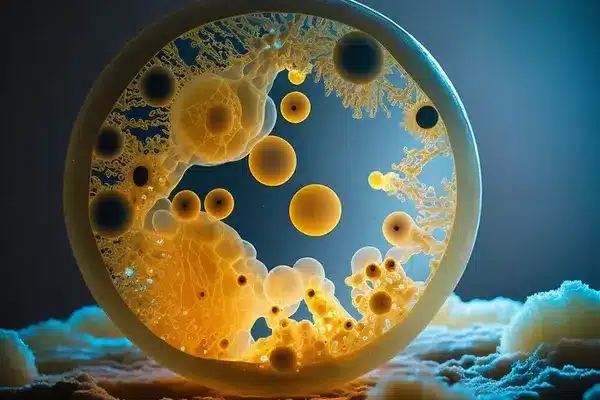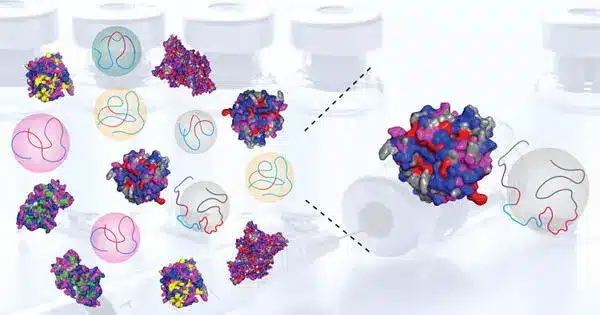For centuries, microbes such as bacteria, yeast, and fungi have been used in a variety of biotechnological applications such as the production of food, beverages, and pharmaceuticals. Their ability to convert raw materials into valuable products efficiently makes them appealing candidates for sustainable manufacturing processes.
Scientists discover a new way to decarbonize industry using bacteria. The discovery has the potential to reduce greenhouse gas emissions from the production of fuels, drugs, and chemicals. A research team engineered bacteria to produce novel carbon products, which could pave the way to more sustainable biochemicals.
A research team led by Lawrence Berkeley National Laboratory (Berkeley Lab) and UC Berkeley has engineered bacteria to produce new-to-nature carbon products that could provide a powerful route to sustainable biochemicals.
The breakthrough, which was recently published in the journal Nature, combines natural enzymatic reactions with a novel-to-nature reaction known as the “carbene transfer reaction.”
In this paper, we demonstrated that we can synthesize everything in this reaction, from natural enzymes to carbenes, inside the bacterial cell. All you need to add is sugar, and the cells will do the rest.
Jay Keasling
This research may one day aid in the reduction of industrial emissions by providing sustainable alternatives to chemical manufacturing processes that typically rely on fossil fuels.
“In this paper, we demonstrated that we can synthesize everything in this reaction, from natural enzymes to carbenes, inside the bacterial cell. All you need to add is sugar, and the cells will do the rest,” said Jay Keasling, the study’s principal investigator and CEO of the Department of Energy’s Joint BioEnergy Institute (JBEI).
Carbenes are highly reactive carbon-based chemicals that can be used in many different types of reactions. For decades, scientists have wanted to use carbene reactions in the manufacturing of fuels and chemicals, and in drug discovery and synthesis. But these carbene processes could only be carried out in small batches via test tubes and required expensive chemical substances to drive the reaction.

In the new study, the researchers replaced expensive chemical reactants with natural products produced by an engineered strain of the bacteria Streptomyces. Because bacteria use sugar to produce chemical products through cellular metabolism, “this work enables us to perform the carbene chemistry without the toxic solvents or toxic gases typically used in chemical synthesis,” said first author Jing Huang, a Berkeley Lab postdoctoral researcher in the Keasling Lab. “This biological process is much more environmentally friendly than the way chemicals are synthesized today,” Huang said.
The researchers observed the engineered bacterium as it metabolized and converted sugars into the carbene precursor and the alkene substrate during experiments at JBEI. The bacterium also expressed an evolved P450 enzyme, which used those chemicals to produce cyclopropanes, which are high-energy molecules that could be used in the long-term production of novel bioactive compounds and advanced biofuels. “We can now carry out these fascinating reactions within the bacterial cell.” Because the cells produce all of the reagents and cofactors, “you can scale this reaction to very large scales” for mass manufacturing, according to Keasling.
Using bacteria to synthesize chemicals could also help reduce carbon emissions, according to Huang. According to other Berkeley Lab researchers, the production of chemicals, iron and steel, and cement accounts for nearly half of all greenhouse gas emissions. According to a recent Intergovernmental Panel on Climate Change report, limiting global warming to 1.5 degrees Celsius above pre-industrial levels will necessitate cutting greenhouse gas emissions in half by 2030.
According to Huang, while this fully integrated system can be envisioned for a wide range of carbene donor molecules and alkene substrates, it is not yet commercially viable.
“For every new advance, someone needs to take the first step. And in science, it can take years before you succeed. But you have to keep trying – we can’t afford to give up. I hope our work will inspire others to continue searching for greener, sustainable biomanufacturing solutions,” Huang said.
















